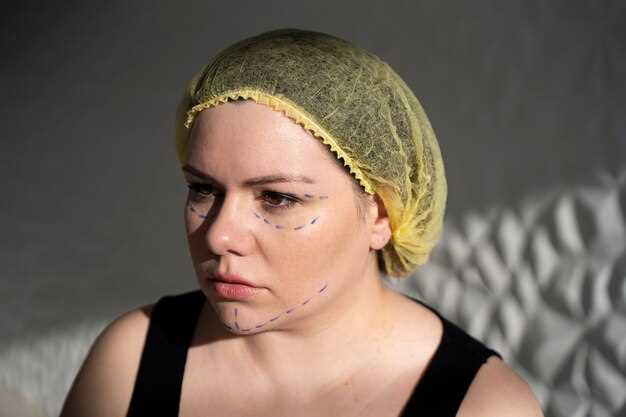Recommendation: pause before any elective enhancement, weigh the long-term impact, and test your motivation by talking with trusted listeners; much of the painful outcomes can be avoided by taking time, documenting feelings candidly, and choosing adjustments that feel naturally aligned with your self-perception.
In the public eye, a visible shift often intersects with billboard campaigns and a flood of messages from fans. Some responses celebrate courage; others press for quick fixes. This openness has learned value for women and for many listeners, showing that options are shaped by pressure rather than personal truth. instead of chasing a perfect look, the path that would support healthier self-esteem includes time, reflection, and supportive communities.
Charitable moves are part of the conversation: the star donates to women-focused programs, and those acts are included in the coverage, showing how public figures can channel energy toward helpful outcomes. If the name attached to the piece couldve sparked a more grounded discussion, so much is gained when fans see that nice, constructive changes come from careful self-questioning rather than external pressure. That balance helps listeners learn to value authenticity over appearance.
For readers seeking guidance, the takeaway is that openness to nuance matters: the name of the artist in discussions should not overshadow the real message, and the journey is personal rather than performative. The broader conversation helped people, especially many women, to see that self-care can coexist with growth, and that much can be learned from mistakes and the courage to talk about them. Visible examples like this remind audiences that progress comes from respect, reflection, and steady effort. thats a reminder that these conversations helped listeners as well.
Practical Outline: SZA’s Plastic Surgery Regrets and Link Sharing
Begin with a four-point plan before discussing the topic publicly, then share one clear, credible link to reliable guidance.
Curious audiences seek context; add a brief note about motivations and boundaries, and attach a vetted link to medical guidelines and body-positivity resources, avoiding gaga headlines.
Address insecurities and self-consciousness as common responses in culture shaped by images that were pushed and entered into public discourse, including discussions about booty and butt, to keep the focus on real impact rather than sensationalism.
Four things to check before posting: provenance of information, tone that is respectful and non-judgmental, boundaries between personal experience and advice, and concrete support resources for readers.
Plan for feedback: respond with clarity, avoid personal attacks, amplify constructive voices, and remind audiences that many are driven by a genuine wish to understand choices; if needed, pause conversation to protect well-being.
Provide a concise, ready-to-share template text and a single link to credible guidance; include a note of gratefulness for the chance to discuss growth and healthy dialogue.
Pull in peer perspectives, such as latto and lowe, to illustrate sisterhood among women; their voices show how insecurities can be navigated without shaming, and they reinforce the value of open, supportive conversations when four aspects are kept in view: motivations, impact, boundaries, and resources.
What SZA Revealed About Her Regret: Key Statements and Timeline
Pause before any facial-change decision; assess long-term impact on self-view and daily confidence to avoid later unease.
In candid remarks, the artist described a facelift sparked by gaga-level trend pressure and the belief that look must evolve with time; she now believes the move was driven by external opinion instead of inner self. The plan spent energy pursuing validation and visibility, amid a chorus of fans and critics.
She talked about the scar and backside behind the change, recognizing the cover makeup could hide only so much. The result did not match her natural shape, and she decided not to show the full self in public, aware that hundreds fing comments and conversations among women echoed similar experiences.
Timeline: then came a quiet period, followed by a candid interview where explanations framed the lessons learned. She believes the episodes were a turning point and decided to shift toward modest self-care and health, avoiding further changes. youll notice a calmer approach in recent appearances.
| Moment | Statement | Impact |
|---|---|---|
| Initial impulse | Facelift sparked by gaga-level trend and belief that looks must evolve with time | Highlighted pull of external opinion |
| Public realization | Recognized scar and backside; cover made the issue less visible, but the outcome did not match inner self | Led to greater authenticity |
| Current stance | Decided to focus on modest health and self-acceptance, with no further enhancements | Shift away from additional procedures |
How Public Reactions Shaped the Narrative and SZA’s Response
Direct recommendation: publish a concise, fact-based update that clarifies intent and sets a clear path forward. The rise of public judgment can tint the life arc, so an honest intro helps those following the scene understand what comes next and what stays factual.
Within the post-bbl conversation, the impact on the general narrative is visible in how people frame the life story and the levels of scrutiny around injury or body-work details. nicki and faraone coverage shape what readers recall, while those comments influence evolving gains and perceived well-being. The strategy centers on transparency, precise timelines, and a plan to help people by providing clear context rather than repeating sensational snippets from the scene. It also considers wants of the audience for transparency and accountability.
Recommended steps to steer perception include documenting the journey, offering direct, factual updates, and inviting questions through a controlled Q&A. Emphasize values that matter to life and health, and avoid dwelling on abdomen or neck specifics that distract from the larger message. Instead, present how developing choices impact overall well-being and how the surgeon’s role informs safer, informed decisions. Focus on same core goals: honesty, accountability, and respectful discourse that supports those watching from within the audience.
In short, the public response rise can be redirected when the message stays aligned with help for people, acknowledges injury realities, and keeps the focus on gains-driven learning within a life lived under scrutiny. The post-bbl context is only one piece of a broader scene, and the strategy should treat the narrative as a living process, consistent across interviews and posts.
Common Triggers for Regret After Cosmetic Procedures and How to Avoid Them
Pause at least two weeks before committing to any change and use the interval to realise your true motives, discussing them candidly with someone you trust to stay together in the decision.
-
Image-driven expectations
Seeing curated images can push you toward a narrow standard of beauty. To counter this, build a balanced reference set that includes real outcomes, including visible scar lines and variations. Assess how a change would feel in yourself, not how it looks on screens; focus on the whole, not just a single feature, and involve a trusted friend or the medical team in the review so you aren’t chasing a name or trend taken from a stranger’s feed.
-
Social-media pressure and comparison
Exposure to strangers’ feeds can translate into decision-making pressure. Counter by drafting a personal criteria list, going offline for a dedicated window, and sharing the plan with a former collaborator or confidant. This keeps your feelings in check and helps you stay away from pursuing an award-winning look at the expense of authenticity.
-
Motivation misalignment
Motives that stem from novelty or experimenting with identity often fade. Before moving ahead, write down the practical goals–improve symmetry, restore function, or boost confidence in social settings. Review these with a partner and a clinician to ensure they align with your daily life and not a temporary impulse from a trend.
-
Lack of clear expectations about maintenance
Some results shift as time passes, and maintenance steps can alter how you feel about the change. Create a long-range plan that accounts for potential touch-ups, aging, and lifestyle shifts. Acknowledge that the most durable outcomes balance aesthetics with natural aging, rather than chasing a static moment.
-
Inadequate scar planning
Underestimating scar visibility or healing time leads to later regrets. Ask about scar-care protocols, sun protection, and realistic timelines for fading. Visualize how the area will look in different outfits–baggy denim or tailored attire–to gauge comfort and confidence over several weeks, not in a single post-procedure moment.
-
Financial and lifestyle stress
Financial strain or a busy schedule can push people toward hasty choices. Establish a budget, set a hiatus from nonessential purchases, and delay nonessential changes until you’re confident the decision fits your lifestyle and your long-term plans rather than a fleeting impulse.
-
Lack of collaborative discussion
Decisions made in isolation yield higher regrets. Engage in candid talks with your clinician, a former patient, and a close circle. Hearing diverse perspectives helps you understand potential trade-offs and align expectations with what’s feasible for your body and daily routine.
-
Misread timing of results
Initial swelling or swelling-related changes can distort perception. Plan for a proper evaluation after settling phases, typically several weeks, to see the more accurate outcome. This delay reduces the risk of acting on a temporary impression and helps you see the long-term result more clearly.
-
Overemphasis on perfection
The desire for a flawless appearance can overshadow practicality. Reframe goals toward harmony with natural features and proportion. Focus on feelings of confidence in daily life rather than chasing an idealized image, and keep in mind that most improvements are about balance, not total transformation.
-
Impact on social and professional identity
Public-facing roles or creative work can complicate decisions. If your career involves visibility, discuss how changes might affect your public image without turning toward a one-note look. Emphasize talent and authenticity rather than a borrowed aesthetic the way a former colleague or artist might present on stage.
How to avoid these pitfalls in practice:
- Prepare a goal sheet: define what you want to improve, why it matters, and how you’ll measure success over time.
- Schedule a two-stage decision window: an initial consult plus a cooling-off period with written notes, so you can see how your feelings evolve.
- Demand a comprehensive plan: ask for long-term maintenance steps and realistic timelines, including scar-care and sun protection guidelines.
- Review outcomes in natural light and across outfits: test comfort and appearance with different clothes, like denim or baggy pieces, to gauge daily wearability.
- Consult a diverse group: include a former patient, a trusted confidant, and a clinician to gauge risks, benefits, and alignment with your values.
- Track your internal signals: keep a brief journal about your overall state, anxiety, and how decisions affect your life together with your routine, work, and social time.
Practical Guidance for Readers Considering Changes: Questions to Ask and Risks to Weigh
Consult a licensed clinician and outline goals in writing before making any changes. Your insecurities and growing concerns, including struggles, deserve a plan that considers upbringing and long-term wellbeing, not a quick fix that compounds mistakes or reinforces the same patterns.
Ask about safety and potential complications: what is the estimated risk of infection or sepsis, early warning signs requiring urgent care, and how often do issues like numbness, asymmetry, or contour changes occur? For areas like the neck, hips, and thighs, request a tailored risk profile and a plan to monitor progress. If post-bbl is on the table, request explicit guidance on recovery timelines, swelling expectations, sensation changes, and long-term outcomes.
Financial and recovery planning: outline total costs, payment options, and the chance of additional sessions. Calculate time off work and transportation needs; a long downtime can worsen stress, and if past attempts worsened outcomes, discuss what changed. Ask for a written recovery timeline, expected swelling, and milestones; confirm when you can resume daily activities. If past attempts took longer than expected, talk with someone you trust, like dave, who can help when you feel frustrated.
Reality check: will changes improve your life? Define what better looks like and whether this aligns with routines, outfits, and self-image. Think about outfits that wears well with the future silhouette and whether your daily habits will cause discomfort. Consider if results will affect your smile and mood, and whether you are prepared for ongoing upkeep. Be honest about risks that could worsen insecurities instead of providing relief.
Alternatives and pacing: explore non-invasive options or gradual tightening approaches that carry fewer immediate risks. Set a pause point to reflect on how much change you really want, and whether the route respects your physical limits. A slow, deliberate approach often yields steadier progress and reduces the chance of post-procedure frustration.
Decision checklist you can follow: list questions you plan to ask and track responses. Do not rush; talk to multiple clinicians to compare plans. Check credentials, cost clarity, and the recovery protocol. Ensure the plan includes a contingency if a clinician recommends a path misaligned with your anatomy. This approach helps many readers avoid disappointment and follow a path that aligns with personal priorities. It can feel overwhelming, but this process is really about making a good, supported choice.
Millz in your circle may share tips, but yall should evaluate each claim. If someone told you a story of a quick fix going wrong, think through it with a critical eye and seek evidence. This moment can be heavy, but following a data-backed process is very good for your life, and something you can tell others.
Sharing Etiquette: When and How to Share This Link Respectfully Across Platforms
Ask for consent before sharing a link that touches personal topics. Create a modest intro, and copy the link with a neutral caption that explains the purpose and invites respectful engagement and support, without sensationalism. In sepsis awareness contexts, the same care applies to tone and accuracy, protecting the whole story from distortion.
Tailor your message by platform: on professional networks, keep the copy concise and purpose-driven; on casual feeds, offer a lightweight invitation to explore the link. Going platform to platform shape tone, so craft a short, clean copy that directs readers to the link and invites a constructive walk through the topic, while saving enough space for genuine discussion.
Respect sensitive feelings: offer a gentle invitation to discuss and provide an opt-in path (comments, DM). In society, messages that lifted others perform best when they are respectful and not pointed or shaming. If you havent asked, dont assume; extend support and invite dialogue openly, and be ready to walk readers to resources that may help. Acknowledge feelings and avoid prying questions.
Timing matters. If your message aligns with July updates or anniversaries, add context but avoid overposting. Allow enough time for readers to read and react, and avoid flooding feeds. Consider a staggered approach across platforms to respect the whole audience and their timelines.
When addressing body-positive topics, emphasize choices and decisions rather than judgments. Use inclusive language that honors curvy bodies and the long arc of personal growth; mention gained experience as part of a memoir lens. Focus on the story, not the body, and invite readers to reflect on their own choices. The link should point to a memoir piece that invites empathy, not comparison.
Avoid spamming groups or circles. If you run a campaign or merchandise (t-shirts, stickers), clearly separate it from personal commentary. Use a simple disclaimer and mark the content to avoid misinterpretation. If you need to replace harsh terms in captions, use s— or other mild phrasing. Keep captions modest and avoid pointed references to body parts such as the butt, which can distract from the message. This keeps the message well-marked and respectful.
Monitor responses and maintain a consistent tone. If engagement climbs to hundreds or millz of impressions, avoid copy-paste replies and tailor responses to context. Dont repeat the same lines across platforms. If harassment appears, dont engage and instead guide conversations toward civil, factual contributions. When in doubt, step back and walk away politely to protect your own wellbeing and the community.
In sum, sharing this link is a chance to offer support and invite thoughtful dialogue. Ensure the message is clear, respectful, and aligned with your own decisions and the reader’s space. The goal is to contribute to a constructive public memoir that invites reflection, not comparison or spectacle.

 SZA Opens Up About Plastic Surgery Regrets – “I’m So Mad I Did That”">
SZA Opens Up About Plastic Surgery Regrets – “I’m So Mad I Did That”">

